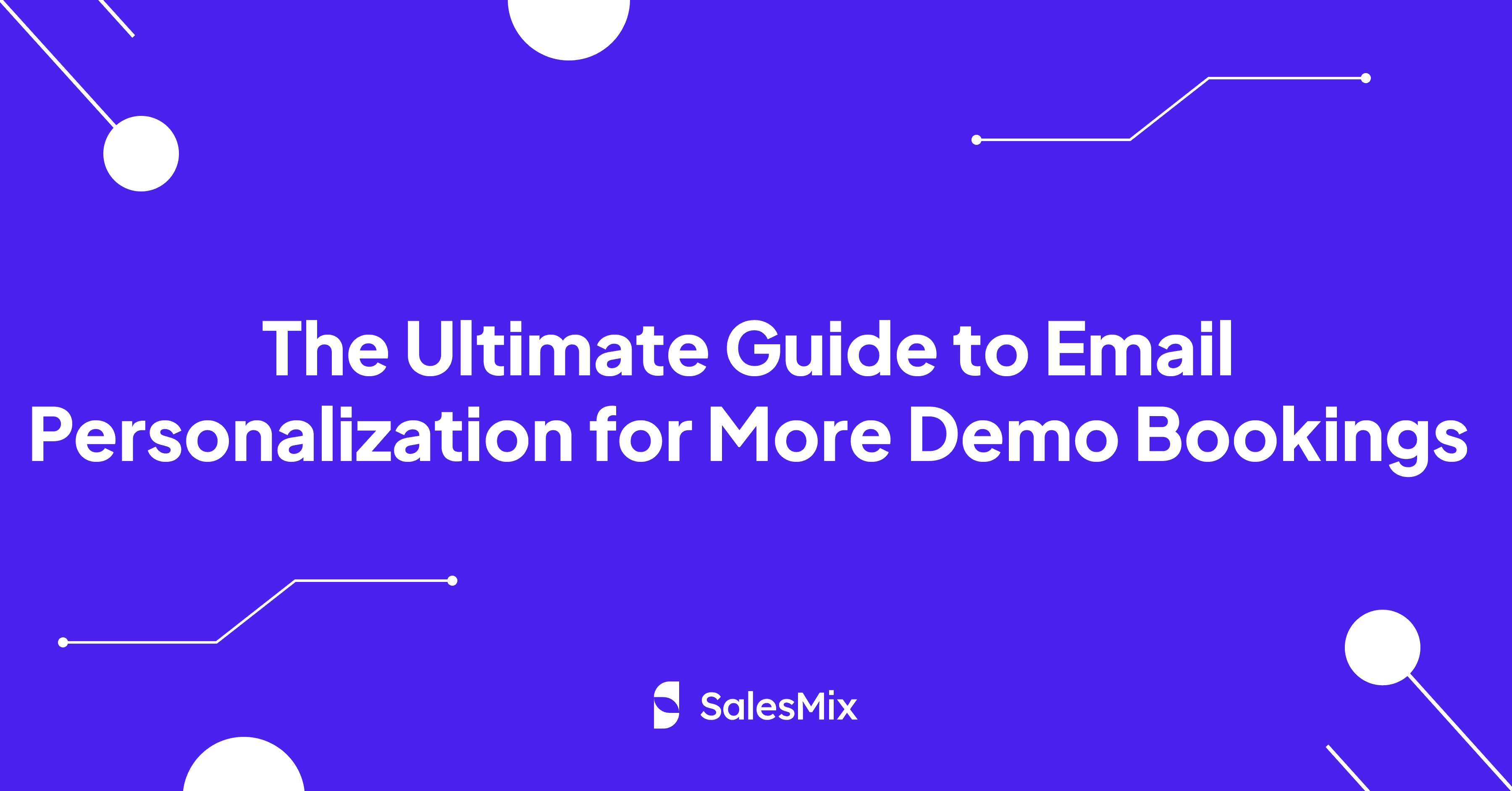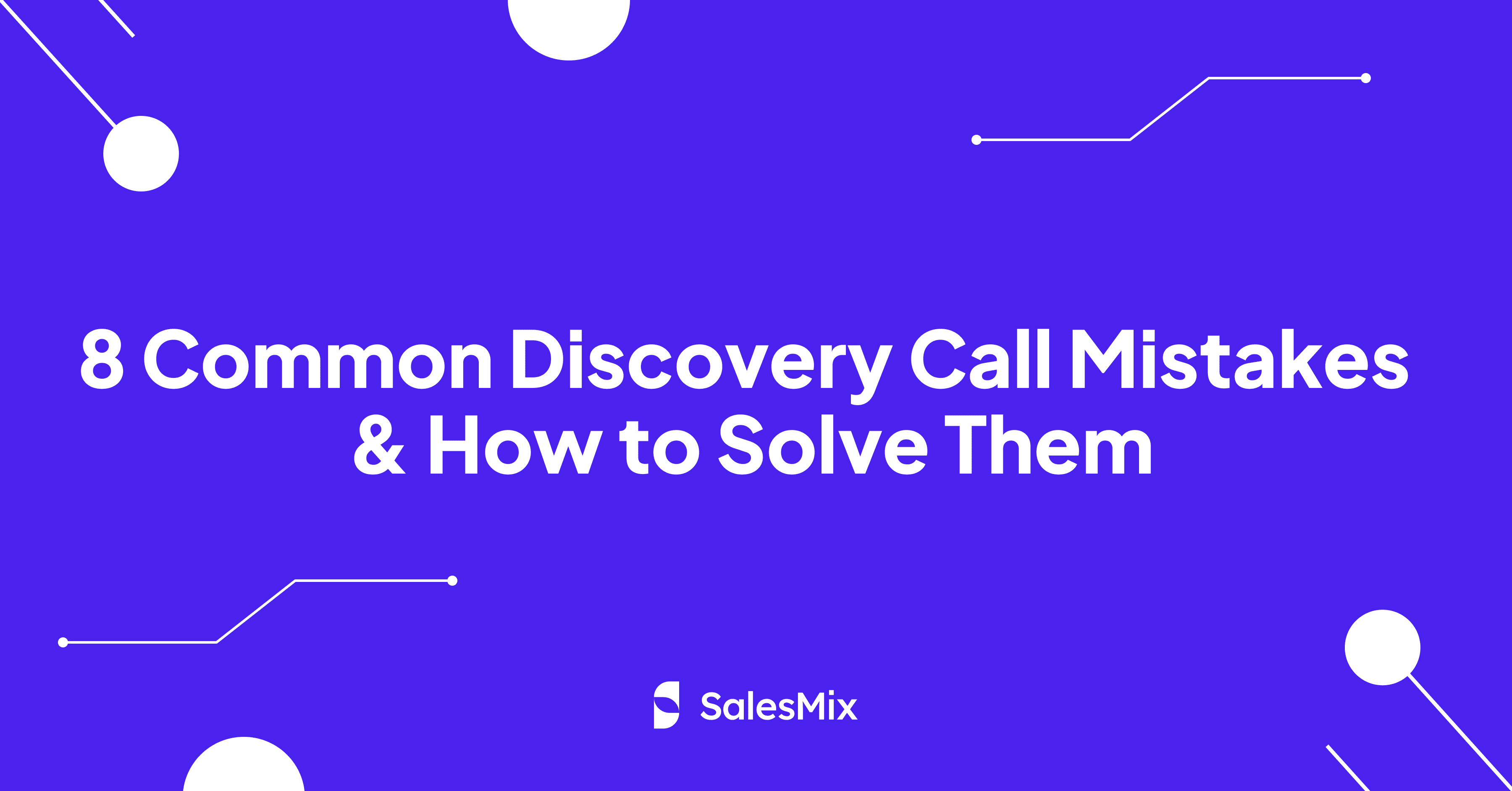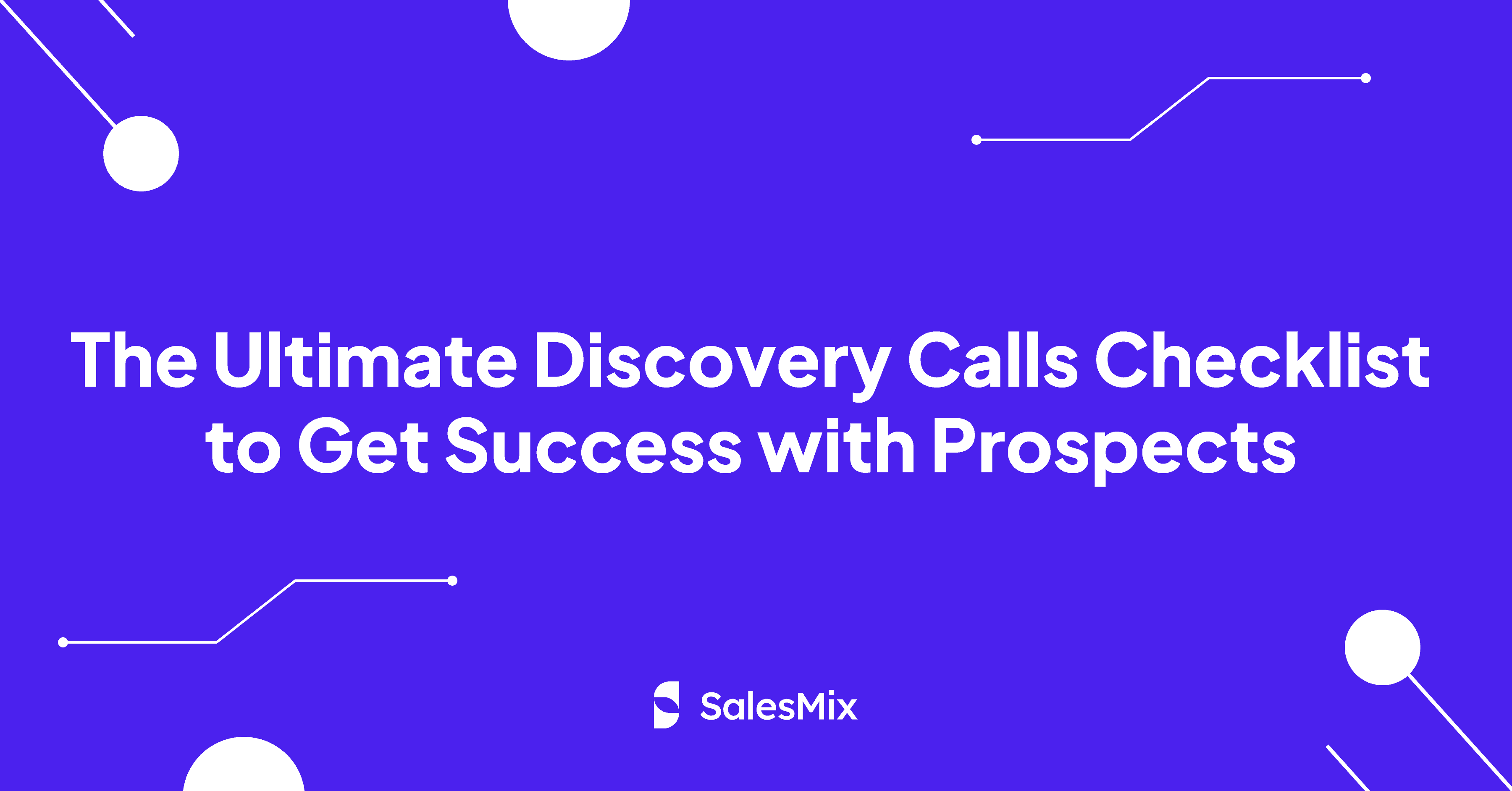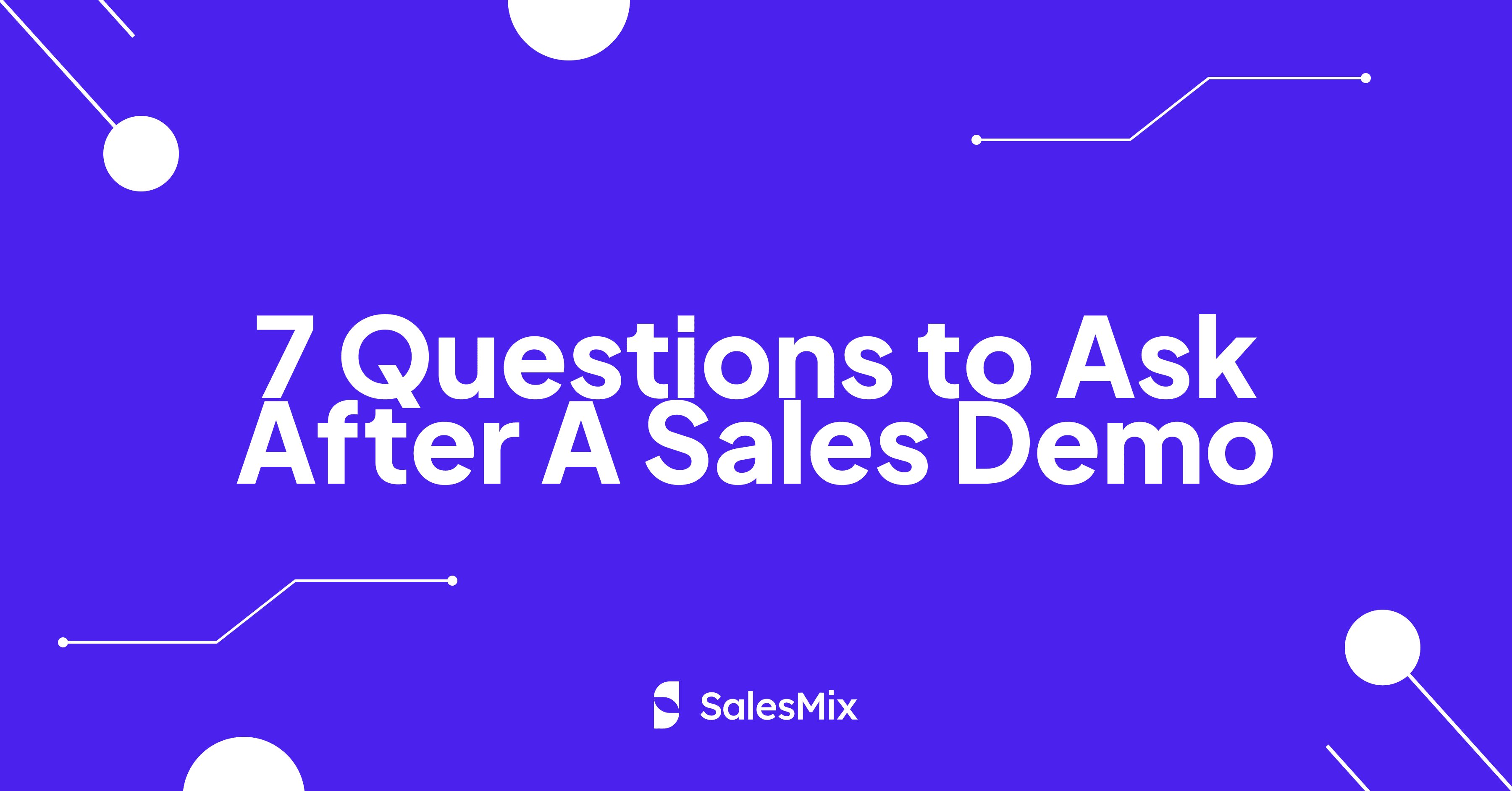Table Of Contents
We all know that personalization is the cornerstone of effective cold emails, yet many SaaS founders end up scratching their heads (I did too at one point, so trust me, I know.) I have also seen many talented founders puzzled over how to get it right or where even to begin with personalized email marketing.
It’s one thing to recognize the importance of tailoring your outreach, but another to masterfully execute it in a way that resonates with your target audience. The challenge often lies not in understanding the why of personalization but in finding answers to the how.
How do you pick the details that you should include? How can you make the message feel unique for the individual without appearing in bulk email?
I will go in-depth in this article to answer these critical questions to give you a headstart in personalizing your next emails to get more demos. Let’s dive in!
What is Email Personalization?
Email personalization is the art of tailoring your email content to the individual preferences, behaviors, and needs of your recipients. This email-based marketing strategy is about moving beyond generic, one-size-fits-all messages to create a more engaging and personal experience by leveraging specific knowledge about a prospect.
Does Email Personalization Actually Work?
I mean, let’s see the difference between personalized and non-personalized emails here. In a non-personalized email, you’d have sent out something like this, “Check out our new tool. It can do that and this and that.” However, in a personalized email, you will write, “Hello [First Name], I noticed your company has been hiring project managers lately. Our tool can help streamline your team’s workflow.”
I believe you get the matter by checking which one would be more tempting to respond to and interact with. As you use personalized experience to make it relevant to your recipients, it also shows that you understand their business situation, making the demo more relevant and necessary to get booked.
If this contrast isn’t enough to put your faith in email personalization, let’s also see some numbers. SmarterHQ notes that 72% of consumers engage only with personalized messaging, demonstrating its critical role in capturing user interest. Campaign Monitor’s report on personalized emails boasting a 29% open rate and a 41% click-through rate, significantly higher than standard emails, reiterates the same thing.
According to HubSpot, another popular email marketing platform, personalized calls to action deliver a 202% better conversion rate than generic ones. These statistics clearly indicate that email personalization not only works in your email marketing campaigns but is also essential for increasing engagement to get more demos booked.
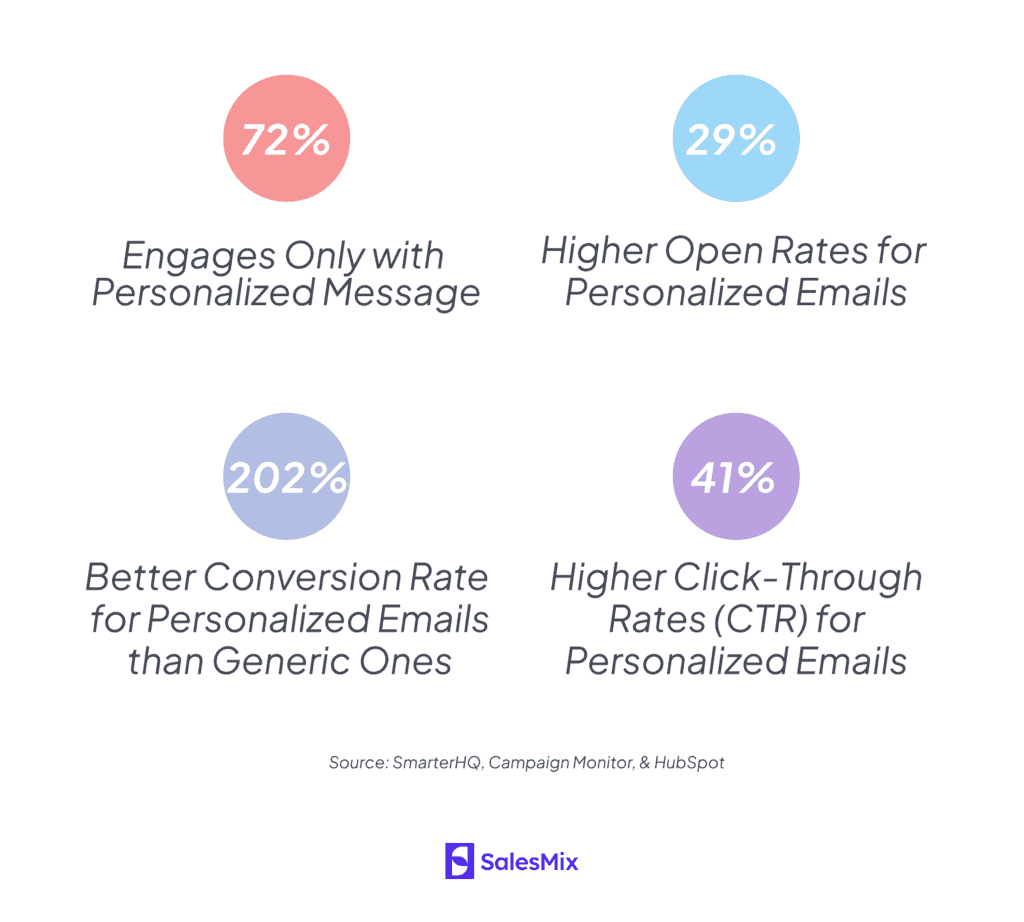
How Can Email Personalization Improve Your Demo Bookings?
In the competitive landscape of B2B SaaS, personalizing your email communications is not just a nice touch anymore. It has become a crucial strategy that successful companies are deploying.
When you tailor emails to meet specific needs and interests, you take your interactions from mere transactions to meaningful conversations. This approach captures attention and significantly boosts the likelihood of prospects taking the next step to book a demo.
Personalized emails will always tend to stand out in a crowded inbox and reduce the likelihood of being overlooked or discarded. When a prospect feels that an email specifically addresses their needs or offers a solution to their problems, they are more likely to engage with the content and accept the invitation for a demo. As a result, personalization in your email campaigns directly contributes to higher engagement rates, increasing the chances of converting prospects into demo participants and, ultimately, into customers.
Step-by-Step Guide to Enhance Your Email Personalization
It’s time we went through a comprehensive journey on what to do from beginning to end to how to use email personalization to increase your demo bookings.
1. Research & Understand Your Ideal Customer Profile
To start off on the right foot, it’s essential to research and understand your Ideal Customer Profile (ICP). This means diving deep into who your ideal customer is and what they need.
You need to know your target audience and get into the nitty-gritty details of your potential customers. It involves gathering data on their demographics, industry, company size, and pain points.
You can start by analyzing your existing customers if you have any. Who are your top clients? What common traits do they share? Tools like LinkedIn Sales Navigator, customer surveys, and analytics platforms can provide valuable insights. Remember, the goal is to create a detailed profile of your ideal customer.
Once you clearly understand your ICP, see if further segmentation is needed. Think of it this way: You wouldn’t send the same email to a startup founder as you would to a CEO of an established company, right? Each segnment has unique needs and challenges. By segmenting your audience, you can tailor your messages to be more relevant and impactful.
For example, let’s say you’ve identified two segments within your ICP: early-stage startups and mid-sized companies. Early-stage startups might be more interested in the cost-effectiveness of your solutions, while mid-sized companies could be looking for scalability and advanced features.
2. Optimize Your Email’s Subject Lines
When it comes to cold email marketing, your email subject line is the first impression you make. It’s like a handshake – firm, friendly, and personal. In the same way, emails with personalized subject lines will help you grab attention and boost open rates.
Personalization is key. Imagine you’re scrolling through your inbox and seeing an email addressed specifically to you – it immediately catches your eye, right? That’s the power of personalized subject lines. Automated first name inputs are a simple yet effective way to make your emails feel more personal. Instead of a generic “Check out our new features,” try “Hey [First Name], these new features could boost your productivity!”
However, personalization strategies don’t stop at just using names. Understanding your audience’s pain points and interests can help you craft subject lines that speak directly to them.
For instance, if you know your target audience struggles with time management, a subject line like “John, save 2 hours a day with this new feature” can be very compelling. It is like incorporating a mini call-to-action (CTA) within your subject line to make it more compelling for recipients.

3. Start Your Emails on A Personal Note
Starting your emails on a personal note can make a world of difference in your cold email campaigns. It helps create a connection and makes the recipients feel like you’ve taken the time to reach out to them individually rather than being just another name on a mass email list.
There can be a whole lot of ways to accomplish this task at hand. One of the best ways to do it is by starting with a genuine compliment or praise and setting a positive tone. Imagine opening an email with, “I saw your recent keynote at XYZ Conference, and your insights on scaling SaaS businesses were spot on!” Such an opening will grab attention and make the recipient feel valued and appreciated.
You could also leverage any interaction points you have had with them. This personalized content could be something as simple as referencing a blog post or LinkedIn article they wrote. For example, “I came across your recent blog post on reducing churn rates, and it really resonated with me.”
Personalization can also be based on the recipient’s company goals, personal interests, or pain points. If you know their company is aiming to expand into new markets, you could start with, “I noticed your company is exploring new international markets. Our latest tool has helped businesses like yours streamline this process significantly.” This type of personalization shows that you’ve done your homework and are offering something relevant to their needs.
4. Make The Email Content Personal to The Recipients
When an email feels like it’s coming from a real person who understands their needs, the chances of a positive response increase significantly. As a result, making your email content feel personal is crucial for engaging your recipients.
You may use your own name when sending emails. It might sound simple, but seeing a real person’s name instead of a company name can make a big difference. Imagine you receive an email from “John at Acme Corp” instead of just “Acme Corp.” The former feels like it’s from someone who wants to help you personally rather than a faceless corporation.
Offering personalized recommendations wherever possible is also important to show you understand the recipients’ interests and wants. For example, if a prospect has frequently visited your pricing page or specific feature pages, mention that in your email. “Hi Darell, I noticed you’ve been exploring our pricing options. Based on your interest, I think our Pro Plan could be a great fit for your growing team.”
My friend Tom noticed that one of his leads, a small startup, kept checking out his collaboration tool features and decided to trigger emails based on this event. In his email, Tom wrote, “Hey [Lead’s Name], I see you’ve been looking into our collaboration tools. Many startups like yours have found them invaluable for streamlining their workflow. If you’re interested, I’d love to give you a quick demo.” This personalized touch got a response and led to a quick discussion to move further down the funnel.
5. Have a Properly Flowing CTA
Having a compelling call-to-action (CTA) is essential in making your email efforts count. It helps you seamlessly integrate that ask into your email flow so it feels like the next natural step.
A well-crafted CTA should feel like a logical conclusion to the email. You want the recipient to feel as though taking this action is the best and most obvious choice for their benefit. For instance, if you’ve spent the email discussing how your tool can solve a specific pain point they have, your CTA should directly address that. Think of it as gently guiding your reader to the next step.
Let’s say you’ve written an email about how your SaaS tool can streamline the recipients’ team’s workflow. After detailing the benefits and sharing a quick story about a client who saw great results, you can transition into your CTA smoothly. “Given how much time and hassle this could save your team, I’d love to show you exactly how it works. Click here to schedule a quick 15-minute demo.”
Notice how this CTA flows naturally from the content. In the same way, your CTA should not feel forced or out of place. It should feel like you’re personally suggesting the next step to a friend.
6. Make Your Email Scheduling Tailored to Recipients
Sending your emails at optimal times can significantly improve open rates and engagement. Tailoring your email scheduling to your recipients’ habits and routines can make your efforts more effective.
One of the key strategies here is to use automation tools to schedule emails when your recipients are most likely to read them. Different professions and industries have varying peak times for checking emails. For example, if you’re targeting C-level executives, you might find that early mornings or late evenings work best, as they tend to check emails outside their busy meeting schedules.
Research plays a crucial role in determining these optimal times. Look at your email analytics to identify patterns in open rates and engagement. You can get insights into when your emails will most likely be opened. Combine this data with general industry trends to refine your scheduling further.
My ex-colleague, Dave, runs a SaaS platform for project management now. He noticed that his target audience, project managers, often checked their emails around 10 AM and 2 PM. He used this information to schedule his emails to go out at these times. Then, he saw a noticeable increase in open rates and responses. Dave didn’t just rely on guesswork; he used data-driven insights to optimize his email timing, which you should do, too.
7. Have Your Emails Localized to Your Recipients
Localizing your emails is a powerful way to connect with your recipients on a deeper level. It shows that you’ve taken the time to understand their unique context and needs. This is especially important when your outreach goes beyond the US.
Suppose you’re reaching out to potential clients in Europe. Mentioning prices in dollars might not be as effective as converting them to euros or pounds. For example, instead of saying, “Our service costs $100 per month,” you could say, “Our service costs €85 per month.” This small change can make your email feel more relevant and considerate of their local context.
Cultural relevance is also a crucial aspect of localization. Different regions have different holidays, customs, and business practices, and acknowledging these can go a long way.
For instance, if you’re emailing businesses in Japan, you might reference the significance of the New Year’s period, a major holiday season there, to show cultural awareness. “As the New Year approaches, many companies like yours are planning for better things in the next year. Our tool can help you achieve it with [your core services].”
Using local language phrases can also enhance personalization. While you don’t need to translate your entire email, incorporating a few key phrases in the recipient’s language can show respect and effort. For example, starting an email to a French business with “Bonjour” or ending with “Merci” can make a positive impression.
8. Keep Doing A/B Testing & Iterate On the Go
When it comes to email personalization, A/B testing is your best friend. It allows you to experiment with different approaches and see what resonates most with your audience.
A/B testing involves sending multiple variations of an email to a small segment of your audience to determine which version performs better. It could be as simple as testing two subject lines or as complex as varying the entire email content.
It’s important to remember that A/B testing is not a one-time task. You need to keep iterating and testing new ideas to stay ahead. Your audience’s preferences and behaviors can change over time, so the best practices that work today might not work tomorrow. Regular testing ensures that you’re always adapting and optimizing your email marketing personalization techniques.
I know many founders in the industry who swear by continuous A/B testing. Initially, they tested different email templates earlier and found that personalized recommendations based on user behavior significantly boosted engagement. But these leaders didn’t stop there.
They have kept testing different elements, like subject lines, email lengths, and CTA placements, and iterated based on the results. This constant tweaking led to an average 20% increase in their ventures’ overall email performance.
SalesMix: The Hassle-Free Way to Optimize Your Email Personalization
SalesMix understands the necessity for email personalization to shine in the status quo and offers robust features to enhance your email personalization efforts. It ensures that every email you send not only reaches your prospects but resonates with them on a personal level to enhance your marketing efforts.
Advanced personalization is the prime area in which this email marketing automation tool excels. By integrating data from your CSV files, SalesMix lets you use dynamic content insertion – whether it’s inserting the recipient’s first name, customizing terms specific to their industry, or any other variations you may require. This capability ensures that each email feels personally crafted for the recipient to reduce the impersonal tone that plagues many bulk email campaigns.
Its advanced features, like Spintax, prove incredibly useful in avoiding the repetitiveness often found in bulk email campaigns. It allows you to insert variables that rotate through different synonyms or phrases, ensuring each email feels unique and tailored.
For example, using Spintax, you could vary references to a recipient’s business type by cycling through terms such as {businesses|organizations|companies}. This ensures that even when sending emails at scale, each one maintains a personalized touch that can resonate more deeply with the recipient to persuade them to book the demo.
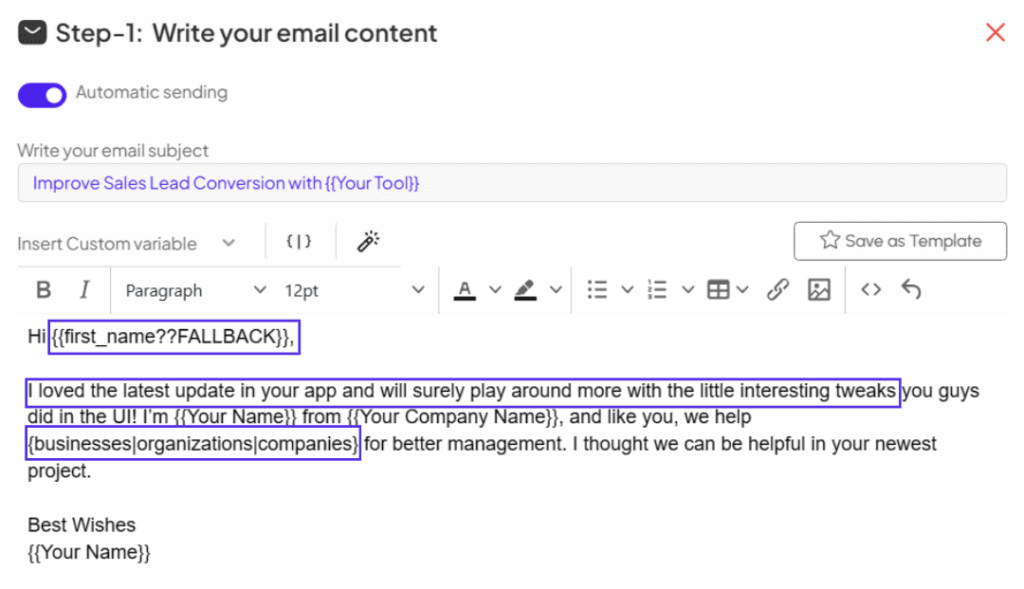
SalesMix also enhances the timing of your emails through its intelligent scheduling features. You can pre-set your emails to be sent out when your recipients are most likely to check their inboxes, even adjusting for different time zones. Additionally, this cold email marketing tool can help you avoid sending emails on US public holidays to optimize open rates further and increase the chances of demo bookings.
Conclusion
Email personalization, far from being just a trendy email marketing strategy, has established itself as a fundamental strategy for increasing demo bookings in the B2B SaaS realm. As you create personalized emails for the recipients, your emails will be more likely to meet prospects’ needs and interests and can make meaningful interactions that are much more likely to lead to a demo booking.
Remember that the goal should not just be to send an email with better content but to create connections that build trust and drive engagement. In this way, you’ll witness an increase in the likelihood of converting your prospects into long-term, satisfied users of your service.

